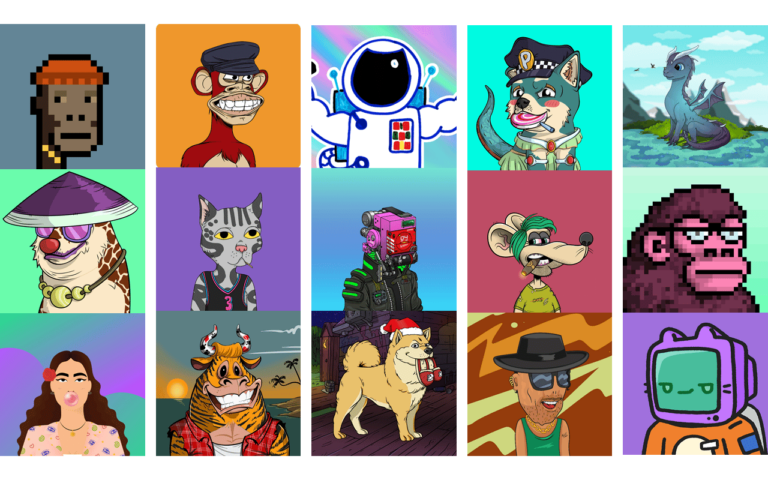Are you looking to create your NFT collection project? Are you an artist who doesn’t have experience in the generative art of NFTs? This article can help you with updated tips to understand NFT generative art and the art-related issues you should tackle before starting a project. To succeed in NFT art, focus on creating unique, high-quality digital work while building a strong online presence and engaging with the NFT community. You have to know about the diversity, rarity, and generation rules of traits, NFT art styles, trends, and the NFT market.
The number of traits
Many customers ask how many traits they would need to create a specific number of NFTs. Well, the short answer is it depends. It is not easy to say an exact number. We recommend at least 250 traits, preferably more than 300, for a 10K collection based on experience. The simple way to calculate the number of NFTs you can derive from X number of traits is easy. Just multiply the numbers. For instance, if you have four properties with five traits each, the number of NFTs you can get is:
5*5*5*5 = 625
Note that having the same number of traits divided into more properties can generate more unique NFTs for you. If we have 20 traits like the above-mentioned example but divided into two properties instead of four, the output number would be:
10*10 = 100
which is way less than the first number. So having more properties can add to the diversity of your project.
In reality, it’s not that easy. Some factors affect the output number and make calculating the exact number complicated.
Read more: Types of NFTs
Diversity of traits
The first factor you need to consider is diversity. You want your NFTs to look unique, so more than one changeable item should differentiate two NFTs. Look at the Mekaverse project, for instance. Every one of the Mekas in the following photo is an NFT from the original project. As you can see there are many NFTs that are almost similar in this project. Lack of diversity can harm your project’s aesthetics or in some cases, it can shatter the project’s credibility.
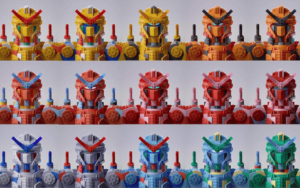
MekaVerse Project suffered from a lack of diversity.
Rarity of traits
You have never seen a collection with a balanced distribution of traits. Some properties are rarer, which results in uneven distribution. There may be even some legendary or super rare NFTs in your collection. You have to think about them in advance. You may decide to design the legendaries separately to be 1/1s. But in the end, you will determine how the traits should be distributed. You may specify that X number of NFTs have a specific trait or property. Decisions like this will add to the complexity of figuring out the number of traits.
Generation rules
If you have generated an NFT collection before, you know that there are some rules you need to follow in your generation code. Some of these rules are for the sake of rarity that we already discussed. Some other rules control how traits should be used proportionately. For instance, imagine you have a turtle neck sweater in the Clothing property and Necklace as another property. You should define a rule for the machine to prevent using necklaces with turtle neck sweaters cause the turtle neck covers the neck, and the necklace won’t be visible.
Removing this rule may result in two NFTs having the same look with different necklaces that are not visible. Therefore, setting rules in code to avoid generation inconsistencies is a necessity. Dealing with these rules can be frustrating, so you should consider this when choosing the traits list. We will discuss the traits list in the next section.
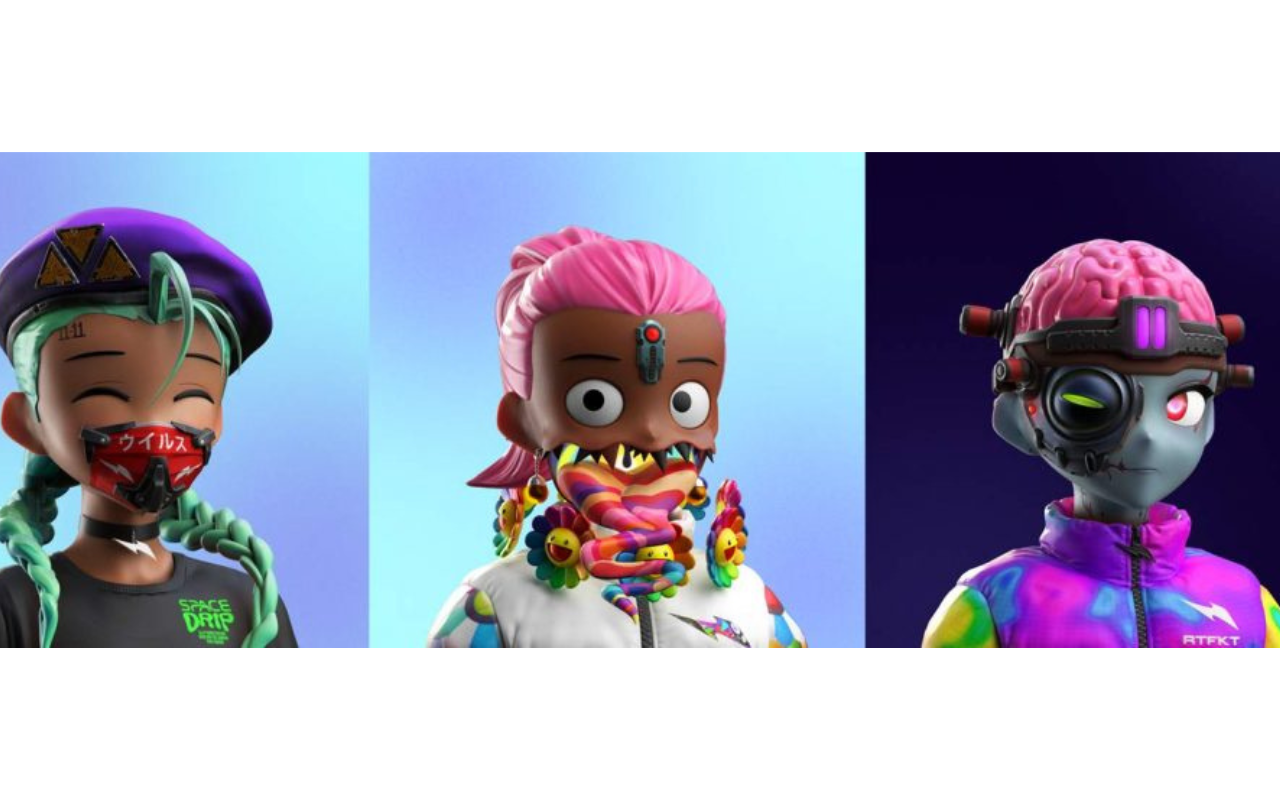
The list of traits
Where do you start to prepare the list of the traits of an NFT generative art? You may have 10-20 ideas, but you probably don’t have all the 300 traits in mind. The first step to creating the list of the traits is, coming up with the properties list. Based on your project’s specifications, provide a list of the properties you can use in your collection. Choosing the list depends on the facets of your art. For instance, whether it is a half body or full body, front view or side view, etc. These factors determine which assets we can use as properties of your collection.
Once you come up with the list of properties, start writing down the list of the traits for each property. Research can help you here as well. Review other projects and see how they’ve sorted their trait list. Use them as inspirations for your ideas. Never copy the traits, especially if the project is famous because that will damage your credibility.
Let’s review what has been said in an example: imagine we want to define the properties and traits of the art base, which is a human character. First, we have to clarify some questions for ourselves. Does this character belong to a specific culture? What are its characteristics? Do you want the art to be funny or serious? Ask and answer as many questions to clarify the image for yourself. Ok, now begin writing down what you have in mind. Define the traits of each property and start searching the internet to fill the gaps.
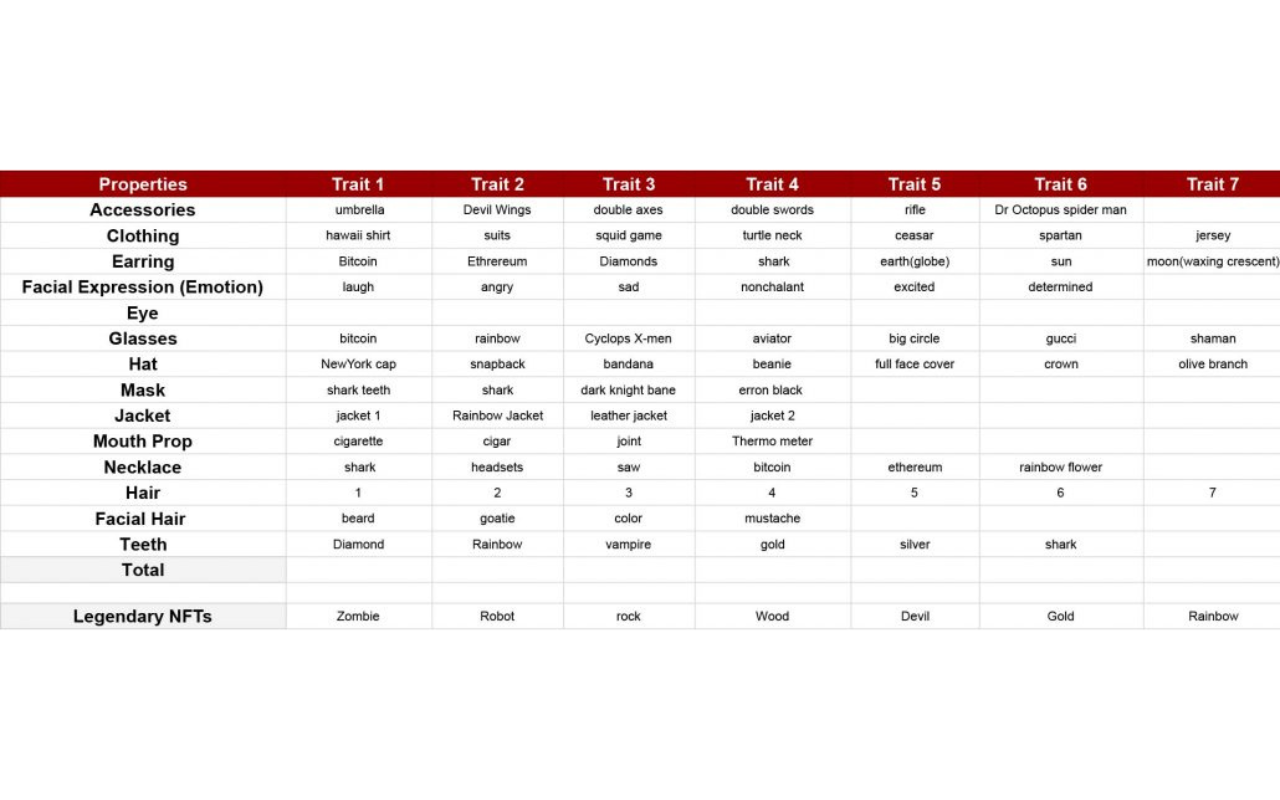
How to choose the best NFT Art Style
Four main factors play a role in choosing an art style for your project: Cost, Time, Trend, and Audience. You have to consider all of these NFT art tips before choosing your art style.
Time
As you may know, time plays a pivotal role in the NFT market. This market is fast-changing, so you should move on a tight plan for your project. In other words, you need to build as fast as you can. The more complex your art style is, the more time its production will take. Everybody believes that quality takes time, but there is a trade-off between the quality of your artwork and the time it takes to produce. So you need to make this decision carefully considering all the aspects.
Cost
The trade-off assertion mentioned earlier about time is also plausible for the Cost. Complicated art is going to cost more. Let’s review the previous argument with an example. There is no doubt that 3D hyper-realistic art looks cool, but depending on many technical details it can cost five to ten times more than a doodles style 2D art and probably take three times more in production time. So you should choose the amount of money you want to spend on the appropriate NFT art style based on your budget, goals, and project size.

Trend
The third factor is the trend. If you’ve been following the NFT market, you’ve probably seen that from time to time, an NFT art style becomes the trend of the market. People tend to buy what they believe has more liquidity. And since people see the trending art is selling in the market, following the trend of the day can reassure people that what they are buying has liquidity.
As a result, following the trend can make the selling process easier for you. However, there is a downside to following the trend. People might not take you as an original project. You probably won’t find a blue-chip project that has copied another project’s art style. Great projects want to look unique; they have the mindset that everybody recognizes them immediately when seeing their art. Knowing your audience and the goals of your project can help you make a wise decision.
Audience
You have to find out whether your audience will follow an original project or a project that follows the market trend. This is a marketing discussion that you have to have a plan for.
you need to know your audience. Who are you targeting? Who are the types of people that will resonate with your project’s goals? Making a persona of your audience is one of the first things you need to do in your marketing plan, which also can help you decide on the art style of your project and come up with an NFT art design that your audience will like.
How to have a perfect NFT Art Design
Here, our NFT art studio will share some artistic tips in designing the NFT generative art that utilizing them will make your project stand out in terms of art.
Choose Beautiful Traits
You don’t need to design all traits to be mind-blowingly beautiful. But you want all of them to have a minimum aesthetic standard. Since common traits define the overall look of your collection, choose and design them in a way to help the collection stand out. Rare traits carry a high expectation; people expect them to be superior to the common NFTs. Thus, be even more careful about choosing rare traits; they should look impressive. If you decide to have super rare or legendary NFTs in your collection, it’s better to design them as 1/1s. Use special traits just for your legendaries.
Character Base
Project owners want to reflect their ideas and goals in their NFTs. The character base is present in the whole collection, so this part of the NFT art plays a huge role in representing your ideas. A poorly designed character base can also tie your hands to choose the traits and put them together. The idea behind the character base is important as well. You cannot hope to accomplish designing an outstanding artwork without putting some thought into it. Why do you want to choose an idea among others? Is it in line with your goals? Is it creative or unique?
Let’s dive in deeper with an example. If you’re reading this article, you probably are familiar with the Bored Ape Yacht Club project. They chose apes as their character base. It was innovative at that time. Many projects have tried to copy their art with derivative projects, but nearly none was as successful. You may argue that art is not the only factor determining a project’s success. I agree, but the argument here is that BAYC’s art was unique at that time. It is easily recognizable and funny.
The team behind the project is indeed excellent, but don’t forget that they have carried out their project with the idea of bored apes. They’ve used the concept of bored ape in their promotional videos, social media artworks, and community. So the character base should relate to the general idea and goals of the project.
Background
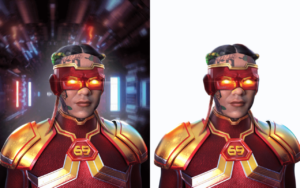
Many have underestimated the role of background in NFT art. Some experts say that background is as important as the subject. It can convert a bland soulless NFT into an eye-catching piece of art.
Designing the background can be tricky. Not only should you pay attention to its role in the whole design, but also you should be careful it doesn’t dominate the subject. The background design is a delicate job as it needs an experienced artist with a deep understanding of the concepts of space, depth, colors, etc..
Point of View

from left: front view, 3/4 view, side view
Another factor you should consider in NFT art design is the point of view. After the BAYC many projects chose the 3/4 view for their project. Later many projects used the front view and side view.
Changing the point of view can add to the uniqueness of your project. Look at the PXN NFT project. They have lowered the angle of the 3/4 view a little, and the result is a unique and innovative art.
But think about the traits you can use for your art in each POV. You may not be able to use some traits that go with a specific POV in another POV. Consider this before providing the traits list.
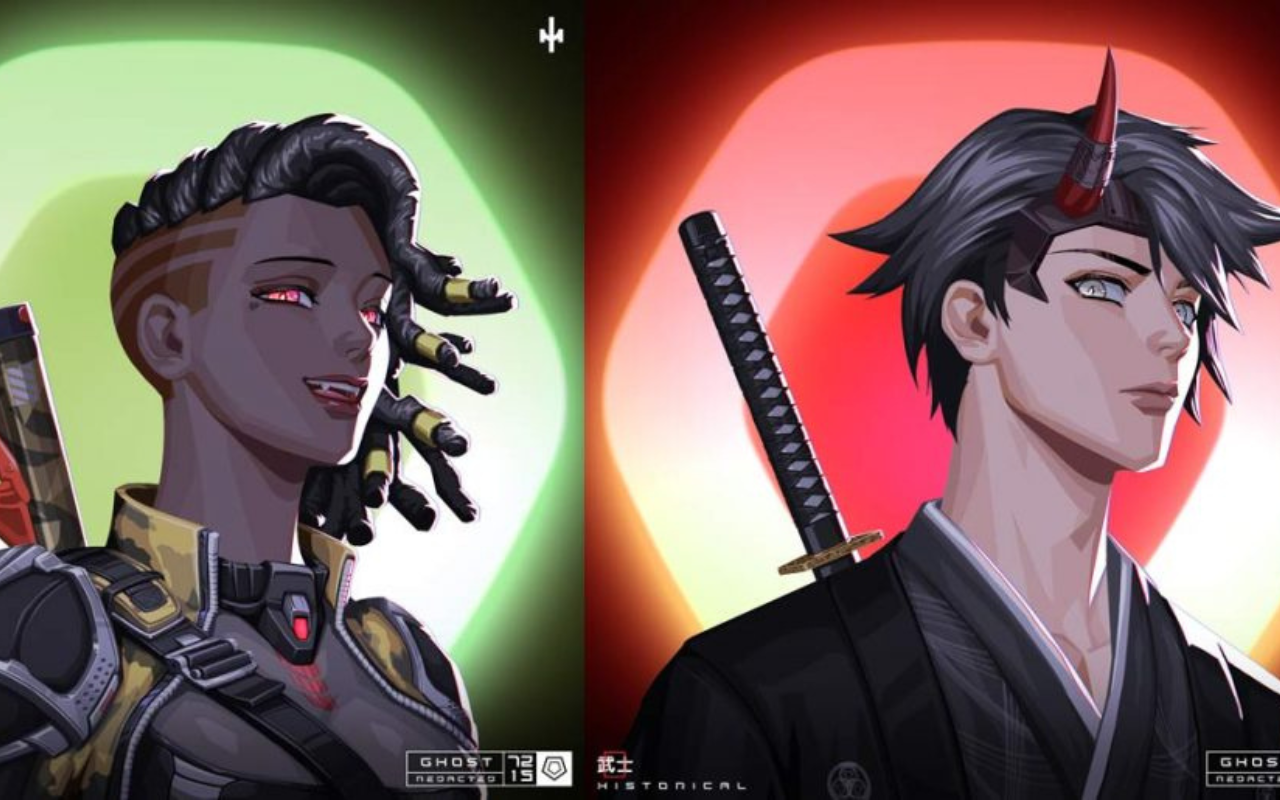
Trust the artist
If you’re not an artist and need to hire one to design the art for you, read our suggestions in this regard. As discussed earlier, the NFT generative art has some intricacies that only an experienced artist knows how to handle. So check for previous records of them designing NFTs before hiring. When you find the right artist trust them. Don’t just order them to design what you have in mind. Ask for their opinion, and try to utilize their creativity. They have the experience and expertise required for the job and may have some ideas to improve the artistic design of your project.
In the end, remember that simplicity is a prominent element contributing to your project’s success. Keep the art simple, clean, and unique. Unnecessary complications can waste your time and money that may result in your project’s failure.
